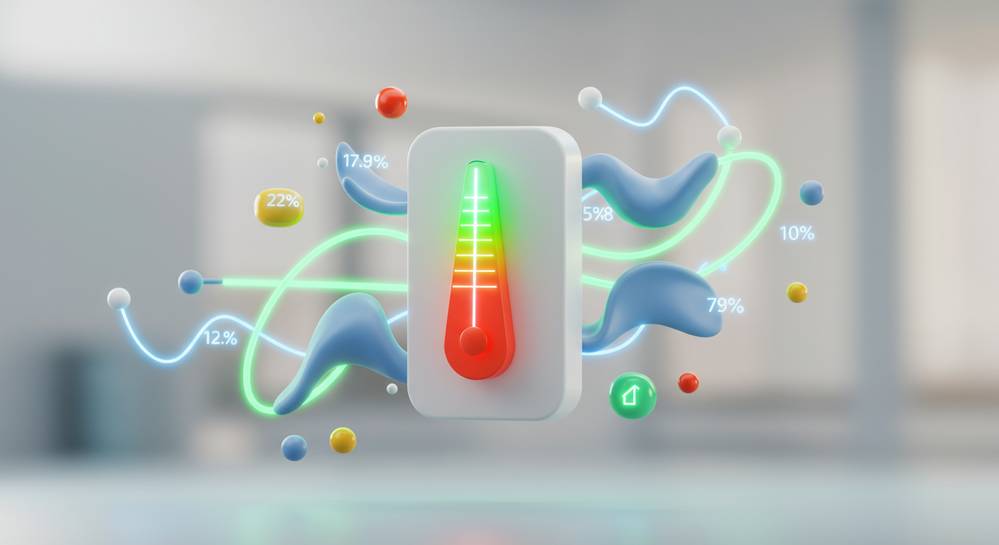In the quest for a more sustainable and cost-effective lifestyle, homeowners are increasingly turning to innovative solutions. Among these, smart thermostats for energy savings stand out as a pivotal technology. These intelligent devices do more than just control your indoor climate; they learn your preferences, adapt to external conditions, and provide actionable insights to significantly reduce your energy consumption. This guide delves into how these modern marvels transform traditional heating and cooling into an efficient, automated system, helping you save money and reduce your carbon footprint.
What Are Smart Thermostats and How They Function
Smart thermostats represent a significant leap from their programmable predecessors. Unlike traditional models, they use advanced sensors, Wi-Fi connectivity, and artificial intelligence to learn and adapt. These devices integrate seamlessly into a broader smart home ecosystem, enabling remote control and automation. This intelligence makes smart thermostats crucial for energy savings.
Core Mechanics for Energy Efficiency
- Learning Algorithms: Smart thermostats, like Nest, observe habits over time. They learn temperature preferences and occupancy, then automatically create optimized schedules.
- Occupancy Sensors: Built-in sensors detect if anyone is home. If empty, the thermostat adjusts to an energy-saving setting, preventing wasted HVAC use.
- Geofencing: This feature uses smartphone location. As you leave, the thermostat enters an away mode, preparing your home for your arrival.
- Weather Integration: Connecting to local forecasts anticipates external temperature changes. Pre-cooling on a warm day, for instance, reduces aggressive cooling needs later.
Key Features Driving Energy Savings

The true power of smart thermostats for energy savings lies in their intelligent features. These functionalities work together to ensure your HVAC system operates only when needed, at the most efficient settings. This proactive approach significantly minimizes energy waste.
Understanding Advanced Energy-Saving Capabilities
- Remote Access and Control: A smartphone app allows thermostat adjustments from anywhere. Forgetting to turn down the heat before vacation becomes a non-issue, saving significant energy. This feature benefits unpredictable schedules or multiple properties.
- Energy Usage Reports: Most smart thermostats provide detailed reports on heating and cooling patterns. These insights highlight peak usage, identify inefficiencies, and guide informed decisions about energy consumption.
- Zoning Capabilities: For homes with multiple temperature zones, smart thermostats manage each independently. This enables heating or cooling only occupied areas, greatly reducing energy expenditure in unused rooms. Explore options for optimized home climate control.
- Smart Alerts and Maintenance Reminders: Devices send alerts for unusual temperature shifts or system malfunctions. They also remind users to change air filters. Proactive maintenance ensures HVAC efficiency and prevents costly repairs, contributing to overall energy savings.
Choosing the Right Smart Thermostat for Your Home

With a variety of smart thermostats on the market, selecting the ideal one requires careful consideration. Your specific needs, existing smart home ecosystem, and budget all play a role. Each brand offers unique selling points and varying levels of integration, impacting potential smart thermostats for energy savings.
Factors to Consider for Smart Thermostats
- Compatibility: Ensure the smart thermostat works with your existing HVAC system. Most modern systems are compatible, but checking specifications for your furnace and air conditioner is always wise.
- Features versus Cost: Evaluate which energy-saving features matter most. Basic models offer remote control and scheduling. Premium options include learning algorithms, occupancy sensors, and advanced zoning capabilities.
- Smart Home Integration: If you already use Google Home, Amazon Alexa, or Apple HomeKit, choose a thermostat that integrates seamlessly. This enhances convenience and automation within your home.
- Installation: Many smart thermostats are designed for DIY installation. However, some require a C-wire or professional assistance. Factor this into your decision and budget. For more complex setups, consider consulting an expert on undefined.
- User Interface and App Experience: A user-friendly interface and an intuitive mobile app are crucial. Look for clear displays and easy-to-navigate controls to maximize your device’s benefits.
Maximizing Your Energy Savings with Smart Thermostats

Owning a smart thermostat is the first step; actively using its features and optimizing its settings is key to realizing significant smart thermostats for energy savings. Simply installing the device without engaging with its capabilities will yield limited results. Proactive management unlocks the full potential of these intelligent systems.
Best Practices for Optimal Energy Efficiency
- Utilize Learning Features: Allow your thermostat ample time to learn daily routines and temperature preferences. More data enables more precise climate control optimization.
- Take Advantage of Geofencing: Enable geofencing if your device supports it. This ensures your home is only actively heated or cooled when you are present or on your way back.
- Adjust Away Temperatures Wisely: Set your “away” temperature to conserve energy without overstraining your HVAC system upon return. A common recommendation is a 7-10 degree setback from your comfort setting.
- Monitor Energy Reports: Regularly review the energy usage reports provided. These reports pinpoint areas of high consumption and suggest adjustments for greater efficiency.
- Combine with Other Smart Home Devices: Integrate your smart thermostat with devices like smart blinds or ceiling fans. Closing blinds on sunny days, for example, reduces air conditioning demand, enhancing overall savings.
- Regular Maintenance: Ensure your HVAC system is well-maintained. A clean filter and serviced system operate more efficiently, complementing your smart thermostat’s efforts.
Embracing smart thermostats is a strategic move towards a more energy-efficient and comfortable home. By leveraging advanced technology, these devices offer unparalleled control and insight into your energy usage, translating directly into significant savings on utility bills. Beyond the financial benefits, they contribute to a greener planet by optimizing energy consumption. Investing in a smart thermostat is an investment in your home’s future, providing both immediate and long-term advantages.
Ready to take control of your home’s energy? Explore the best options for your needs at Efficient Home Goods.